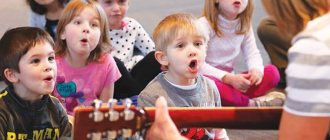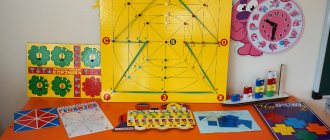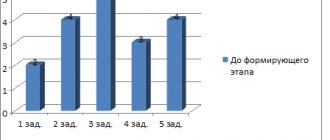Boris Pavlovich and Lena Alekseevna Nikitin are called by many classics of Russian pedagogy. Using the example of their own large family back in Soviet times, they demonstrated how, by breaking established stereotypes in upbringing, they could help a child turn into an independent, harmoniously developed personality.
People first started talking about the Nikitin family in the late 50s of the 20th century. The village of Bolshevo near Moscow, where the teachers lived, was shocked by the way the young couple raised their children. The local community was surprised by the fact that the Nikitin children, who ran barefoot in the snow and were able to perform dizzying gymnastic exercises, were simply bursting with health and amazed with their intelligence. By the age of three or four, these kids had already mastered reading and the basics of mathematics, enthusiastically played logic games invented by their father, and as soon as they started school, they skipped grades.
It was then, in the 1960-1970s, that the Nikitins laid the foundations of Russian parental pedagogy, which are still used today.
Basic principles of education “in Nikitin’s way”
According to the Nikitins, adults traditionally allow two extremes when communicating with a child. The first is being organized. That is, super-caring care and continuous activities, entertainment, games. The child has no time for independent activities.
The second extreme is the abandonment of the child. This means that communication with the baby comes down only to serving him (feeding, drinking, putting him to sleep). This approach leads to deprivation (psychological starvation), hospitalism (delayed emotional and mental development) and, ultimately, mental retardation.
The Nikitin system is based, first of all, on labor, naturalness, closeness to nature and creativity. The guys are masters of themselves, their actions and routine. Parents do not force them to do anything; they only help them understand complex life and philosophical problems. Adults push, rather than get ahead of children, and enter into dialogue with them. The main task of education, according to the Nikitins, is the maximum development of the creative abilities of a growing person and his preparation for life.
The authors define the basic principles of their method as follows.
Firstly, freedom of creativity for children in their classes. No special training, exercises, lessons. Children exercise as much as they want, combining sports with all other activities.
Secondly, light clothing and a sports environment in the house: sports equipment is part of the daily life of children from early childhood, becoming their natural habitat, along with furniture and other household items.
Thirdly, parental concern for what and how the kids are doing, the participation of adults in children's games, competitions, and in general - in the very lives of children.
Parents should have only one goal: not to interfere with the child’s development, but to help him, not to put pressure on children in accordance with some of their own plans, but to create conditions for their further development, focusing on the children’s well-being and desires.
Lena Alekseevna and Boris Pavlovich did not initially set themselves the goal of teaching their kids everything as early as possible. They noticed that children develop earlier those aspects of intelligence for which appropriate “advanced” conditions have been created. Let's say a child has just begun to speak, and among his toys he already has cubes with letters, a cut alphabet, plastic letters and numbers.
What should parents do?
How do we do it? Ancestors are always busy: earning money or going about their business. Children grow up on their own with gadgets in their arms. The baby is raised by grandparents or other people's aunts. From the age of 2-3 they are handed over to the state. And depending on your luck.
Parents, do you want to raise a healthy and capable child? So it's up to you! Taking a conscious, thoughtful approach to your responsibilities as a father is your guide. Help the little one take his first steps on the steps of creativity.
The main secrets of development, according to the Nikitin principles:
- While helping the child, the adult himself needs to turn on his brain and get creative;
- try not to be late with development;
- do not impose education;
- support any interest;
- show by personal example “what is good.”
Spouses, create a healthy, loving atmosphere in your home. Caring parents teach children to love work, study, sports and active life.
Organize your home space in such a way as to help your child understand the world around him as much as possible.
So, the house should have:
- fiction and technical books, dictionaries, diagrams, encyclopedia maps for intellectual development;
- smart toys, cubes, construction sets for the development of logical thinking;
- a sports corner equipped with sports equipment for physical education;
- workshop with various tools for developing practical skills.
The presence of all this has a huge impact on the future viability of children, the choice of profession and their path.
How to make a child want to study?
So, the conditions for development must precede this process. This means they need to be prepared in advance. That is, on the walls of the children's room you need to hang a map of the hemispheres, tables of hundreds and thousands, printed and capital letters, measuring instruments, books. And first impressions can involuntarily arouse a child’s interest in some area of knowledge and even develop certain abilities. Working together or working side by side is an obligatory interest in each other’s work process and its results, and at the same time, it is a reason for conversation and exchange of opinions. Here you should pay attention to one very important point: you should never do for a child what he can handle on his own, and never decide for him what he can decide on his own . In any activity for children, adults should try to encourage creativity without imposing their opinions, and without rushing to be sure to prevent a mistake or immediately point out it. And in case of failure, do not reproach or shame the child. But success must be celebrated and not stingy with praise. The main thing is that adults never remain indifferent to what the children do and how they do it, what they do.
Opening of a new pedagogical law (NUWERS)
Accumulating pedagogical experience in raising his children, Nikitin groped for a new pedagogical law, which he called NUVERS: the irreversible extinction of opportunities for the effective development of abilities. Boris Pavlovich gave a deep justification for it, based on the ideas and research of Amosov, Arshavsky, Grum-Grzhimailo, Descartes, Kapterev, Owen, Pokrovsky, Sarkizov-Serazini, Skripalev, L. Tolstoy, Hiden, Chukovsky, tested and confirmed by the practice of raising his own children. Nikitin developed methods that could prevent the negative impact of this law on the level of intellectual development of future generations.
Physical development
Children must be ready to perceive knowledge not only mentally, but also physically. The child’s body is itself an instrument of learning. Not overloaded with unnecessary clothing, not burdened with super-calorie food, it easily and willingly “meets” the demands of mental order. Sports equipment should be part of a child’s life almost from infancy. The Nikitins paid special attention to hardening. And their experience has shown that this is an effective way to protect a child from most colds.
Attitude to children's health
Nikitin believed that children are capable of solving all the problems associated with them by nature (natural upbringing). Through experience, parents have developed a rule regarding their attitude towards children’s health:
- take medical recommendations as informative;
- take as a basis the results of observations of the child, his well-being, reactions;
- keep a diary of observations;
- monitor children’s physical development indicators using their own tests;
- in case of problems, supplement observations with knowledge from different sources until the essence of the problem and its solution are fully understood.
They believed that health would be good only when the child’s physical abilities were developed.
Intellectual games of the Nikitins
Methodology
In addition to the advanced conditions for development discussed above, Nikitin has developed a number of educational games for children of any age.
No specific educational program is imposed on the child. He is immersed in the world of the game, in which he is free to choose his field of activity. No one explains the new rules to the child, he simply gets involved in the game with the help of a fairy tale, imitating his elders, participating in group games. As a rule, the active participation of adults or older siblings is required at first, but then the child can study independently. So naturally, the baby performs a number of tasks that gradually become more complicated. At the same time, you cannot give any hints to the baby. He must be given the opportunity to think for himself. If the child cannot cope with the task, you need to return to easy, already mastered tasks, or temporarily leave this game. If it is noticeable that the baby has reached the ceiling of his capabilities or has lost interest in the game, it is better to postpone it for a while. This technique allows the child to independently seek solutions to problems unknown to him, to create new things, that is, it leads to the development of his creative abilities.
Features of the Nikitin Games
The main difference is the versatility of games and limitless scope for creativity. They can interest and captivate all family members. Games teach children, moving from simple to more difficult tasks, to get joy and satisfaction from mental activity, to think, sometimes torment, but always achieve the goal.
Each game is a set of problems that the child solves with the help of cubes, bricks, squares, and parts of a mechanical designer. Tasks are presented to the child in various forms: in the form of a model, a flat drawing, an isometric drawing, a drawing, written or oral instructions, and thus introduce him to different ways of transmitting information. The tasks are arranged from simple to complex.
There are several levels of difficulty, from accessible to a two- or three-year-old to beyond the capabilities of the average adult, so the games can excite interest for many years. And the gradual increase in the difficulty of tasks allows the child to improve independently, that is, to develop creative abilities.
When using Nikitin’s educational games in classes with a child, you should adhere to certain principles.
- You cannot explain to a child the method and procedure for solving problems, and you cannot suggest it with a word, a gesture, or a look. By implementing the decision practically, the baby learns to take everything necessary from the surrounding reality on his own.
- You cannot demand and ensure that the child solves the problem on the first try. He may not have matured yet, and you need to wait a day, a week, a month or even more.
- The solution to the problem appears before the child in the form of a drawing, pattern or structure made of cubes, bricks, construction kit parts, that is, visible and tangible things. This allows the child to check the accuracy of the task himself.
- Most educational games are not limited to the proposed tasks, but allow children and parents to create new options and even invent new games, that is, engage in creative activities.
So, the main feature of Nikitin’s educational games is that they managed to combine one of the basic principles of learning - from simple to complex - with a very important condition for creative activity - doing everything independently.
The educational games developed by Boris Nikitin are described in his book, which is called “Intellectual Games”. Here are just a few examples of the most popular ones.
Best age for classes
Nikitin's complex of educational games can be used for preschoolers of all ages, since by changing the tasks it is easy to increase the level of complexity of the game itself. You can start training with cubes from the age of 1.5 years, this will contribute to the development of fine motor skills. For the little ones, it is enough to use cubes of the same color, simply lay them out, trying to create a “path”. At 3–4 years old, you can safely offer children multi-colored cubes and complicate the task, asking them to put together a pattern.
Frames and inserts
This game is accessible to the little ones. It consists of 16 frames with inserts in the form of geometric shapes: circle, square, triangle, ellipse (oval), rectangle and so on. A better place to start is by showing the inserts. Take a circle, an oval, a square, an equilateral triangle and, naming them, show them to the baby. In this case, it is better not to hold them in your hands, but to lay them out on a plain surface (not on a colored tablecloth or carpet, but at least on a sheet of paper). Having shown one figure at a time, you can give them to the baby for independent actions - let him look at them and play. It would be appropriate to offer him a box or jar in which he can put all this and then pour it back. Gradually, the little one will get to know all 16 figures in the set. If you start with a small number of figures, you can attract the baby to play starting from 10-12 months. When the child grows up, you can complicate the tasks: trace the outlines of the figures with a pencil, first along the frames, then along the inserts (this is more difficult), make a double outline, shade the resulting image, draw figures on the count (three circles, two squares), create plot drawings ( herringbone of three isosceles triangles).
Fold the pattern
This game consists of 16 wooden cubes with an edge measuring 3 cm, where each side has a certain color. The cubes must be placed in a wooden or cardboard box (its presence is required). Nikitin advises starting to play with them at the age of one and a half years. In the beginning (especially with the little ones), you just need to sit down next to your child and look at the cubes together: “Look, how beautiful the cubes are!” So I took 4 cubes: one, two, three, four. Look, this is the blue side, and this is the yellow side. What a beautiful blue runner I made! Let's take the bunny, see how he likes to jump on it? And now the path has become multi-colored: blue, yellow, blue, yellow.” Perhaps the baby is no longer listening and is looking around. This means that the acquaintance with the cubes should have been completed a few minutes earlier. The game should not bore the child. And one more thing: like any other, it is advisable to store it in a place where the baby can see it, but cannot get it out himself. When the baby has a desire to play, he can say or point to the box if he does not yet know how to talk. These cubes promote “the development of spatial imagination, accuracy, attention, graphic abilities, the ability to analyze, synthesize and combine.”
Fold a square
This game originated from a puzzle in which several pieces of various shapes were required to form a square. This was a rather difficult puzzle, so Nikitin decided to do a series of simpler tasks. The result is a game for children aged two years and older. It has three difficulty levels. Each contains 12 multi-colored squares. All 12 squares are located on plywood the size of a landscape sheet and seem to be inserted into windows. For children 2 years old and younger, you need to leave 4 of the simplest squares. Let it be a whole square, a square of two rectangles, of two triangles and - cut into two parts along a broken line. Now you can start playing with your child. The parts need to either be arranged into piles (each with parts of the same color), or shown how two halves make a whole square. Then the child is given the opportunity to act on his own. Gradually, the baby will master this level and move on to a more complex one. According to Nikitin, this game promotes the development of color perception, the assimilation of the relationship between the whole and the part, the formation of logical thinking and the ability to break a complex problem into several simple ones.
Attitude to children's abilities
There are 2 types of abilities According to Nikitin:
- performing - the result of assimilation of previously learned;
- creative - the result of self-knowledge and self-solution of problems that have arisen.
Modern official pedagogy develops only performing abilities, but Nikitin sought to develop creative ones by creating special conditions:
- All healthy children have high abilities in all directions.
- These abilities are realized if a developmental environment is created in advance (part of it is educational games), and adults are interested in the child’s achievements.
- In the absence of a developmental environment, the child’s abilities fade away. Opportunities for effective development of abilities.
- The older the child, the more difficult it is to develop abilities, up to their complete loss.
The degree of development of the child’s abilities needed to be assessed somehow, and Nikitin developed his own criteria for this:
- Physical development testing - equity indices that take into account developmental outcomes related to the child's weight and height (still not recognized).
- Testing of mental development, based on assessing the speed of mental processes according to Einsenck and the productivity of mental activity according to Kos.
Effective development of a child's abilities is possible only through play. Boris Pavlovich created a lot of games for his children, which later became the basis of his system.
Fractions
The age range for starting this game varies, from 3 to 5 years. It is a set of three plywood pieces the size of a landscape sheet. Each of them has 4 circles. They all have the same size but different colors. The first circle is whole, the second is cut into two equal parts, the third into three, and so on, up to 12 “slices”. At first, only the first plywood with four circles is left for the game. With their help, you can repeat colors, count the inserted pieces, and compare them with each other. With their help, you can repeat the colors, count the inserted pieces, and compare them with each other. In this way, the child becomes familiar with mathematical terminology. You can try making a multi-colored circle. It is very interesting to build a ladder: at the bottom there is a whole circle, then half, then a third. With its help, you can clearly understand why one second is greater than one third.
Unicube
These are universal cubes that introduce the baby to the world of three-dimensional space. The development of spatial thinking will allow the child in the future to master drawing, stereometry, and descriptive geometry. The game teaches clarity, attentiveness, precision, accuracy.
"Unicube" consists of 27 small wooden cubes. The faces of each cube are painted in such a way (three colors in total) that this combination of faces is rare, if not unique. That is why it is so difficult to complete tasks according to the proposed schemes. Nikitin offers 60 tasks for the “unicube”. The author performed the first of them with children aged 1.5-3 years, and the most complex ones are not accessible to all adults.
Their daughter Anna Ermakova spoke about the Nikitins’ method





